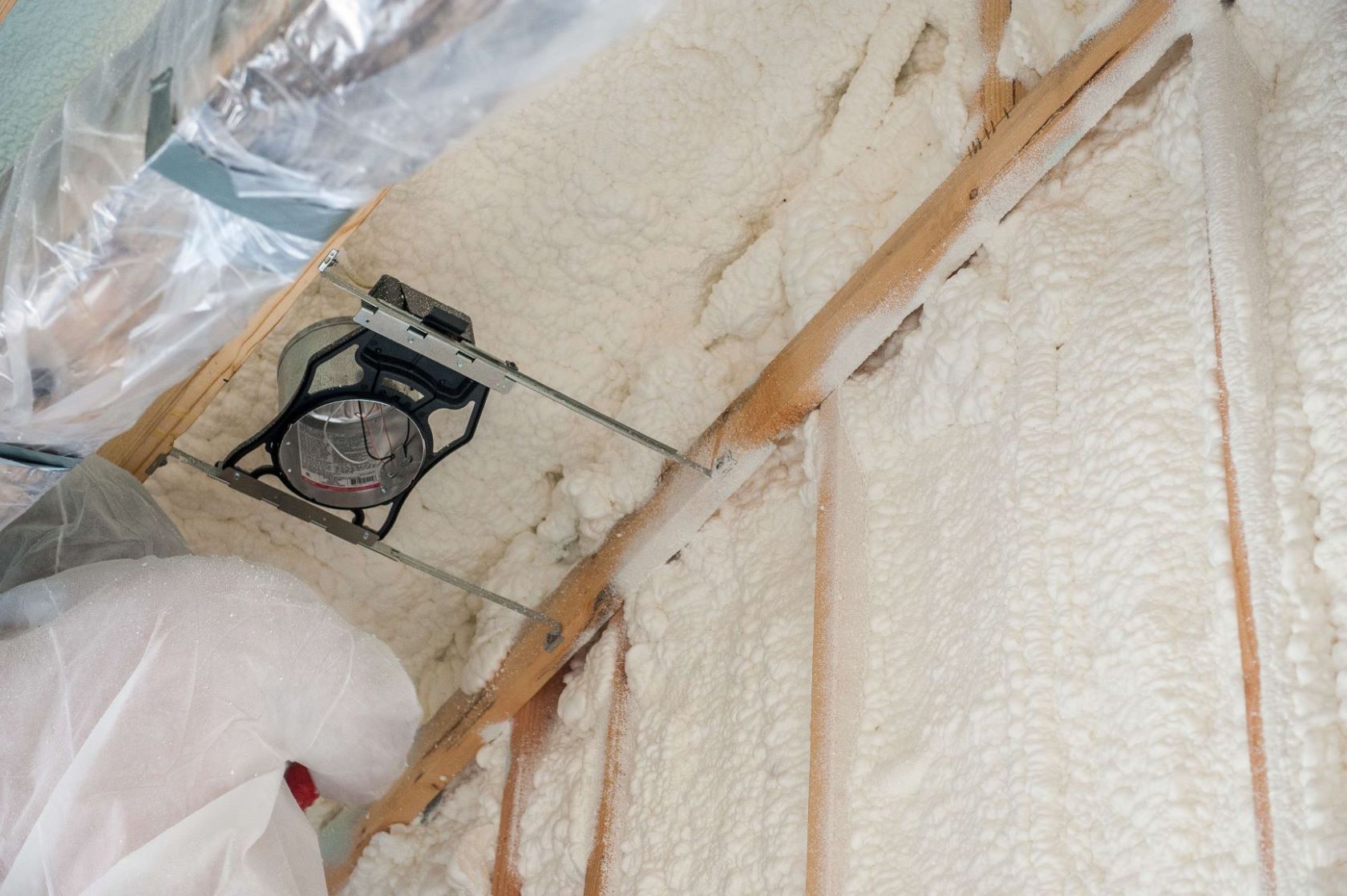Spray Foam Insulation
Spray Foam Insulation
Spray foam insulation is the biggest innovation in the insulation industry since the introduction of fiberglass in the 1950s. Spray foam insulation allows us to create more energy-efficient and comfortable homes, cutting homeowners’ heating and cooling costs. Spray foam insulation can be installed to fill gaps in walls, which makes this type of insulation highly effective in preventing air loss.
Spray insulation is made from polyurethane foam and comes in open cell and closed cell varieties which vary in density. Both open and closed cell forms offer superior insulation and air sealing qualities, as well as protection against moisture, noise, and pests. Spray foam insulation offers advantages in terms of financial savings, health, building efficiency, and a greener environment.
Benefits of Spray Foam Insulation
Spray foam insulation outperforms all other types of insulation by large margins because its long-term benefits outweigh its initial installation costs. Instead of having your walls layered with fiberglass that can flatten over time , spray foam insulation stays in place and is cost effective. Spray foam also offers superior sealing properties and is environmentally friendly.
Superior Insulation Protection
Spray foam insulation products cannot be measured by R-value alone. While traditional fiberglass insulation can only protect against heating and cooling loss caused by conduction, spray foam thoroughly protects against six paths of heating and cooling loss.
Spray foam insulation offers protection against:
- Conduction: The transfer of heat through materials in contact with insulation
- Convection: The movement of hot and cold air in your walls
- Radiation: The transfer of heat through your walls and roof
- Air Infiltration: The transfer of heat by air flow between the exterior and interior
- Moisture Accumulation: Moisture within the insulation that leads to heat loss or gain
- Air Intrusion: The movement of outside air into your home and then back out
Spray foam adequately protects against heating and cooling losses in all of these circumstances. It also hardens after drying, adding structural integrity to your walls.
Environmentally Friendly
When you install spray foam insulation in your home, no harmful particles are released into the air. This makes the installation process safer and simpler. Furthermore, spray foam does not retain moisture nor does it foster mold and mildew growth. With spray foam, your walls are protected from costly long-term damage and provided with some protection from water damage.
Many contractors refer to spray foam insulation as a greener alternative and are satisfied with how effective it is. Closed cell foam can double the strength of your walls and act as a glue by holding your roof and sheathing in place during high gusts of wind.
Easy Application
One great advantage of spray foam insulation is its easy application. Spray foam insulation is quickly replacing the previously preferred method of using fiberglass insulation. Spray foam can be installed easily into walls that are already built as well as into hard-to-reach places.
Spray foam insulation installers also prefer this type of insulation because it saves time. One application of spray foam is all that is required in order to seal and insulate. Since spray foam does not settle, there is no need for re-application.
Damage Protection
Spray foam insulation can help protect your home, as it is insect, water, and fire resistant. Its tight sealing properties and mildew resistance offer helpful protection against water damage, making it an especially wise choice for basements.
Considerations for Spray Foam Insulation
If you’re planning to add spray foam insulation to your home, there are a few things to consider. Your project costs may vary depending on whether you choose open cell or closed cell foam and depending on the size of your space. Installing spray foam insulation properly requires quality control and safety compliance, which means it’s important to hire the right installation professionals.
Cost Effectiveness
The R-value of insulation refers to its resistance to heat flow. High R-values can prevent more heat from escaping your home. Typically, an R-value of about 38 is required for most homes.
While the R-value of foam spray is 6 per inch, fiberglass is only about 2.2 per inch. In other words, you would need more fiberglass than spray foam to meet the required 38 R-value. This would make installation of fiberglass more expensive than spray foam insulation.
Spray Foam Insulation Installation Safety
Spray foam installation requires an understanding of all aspects of safety compliance: a safe job site, proper PPE, equipment start-up and maintenance, foam inspection, and more. Technicians also need to know how to measure the temperatures of material, substrates, and the building. Mastering all of these safety considerations is critical to ensuring safety on the job. After the installation is complete, drying time for spray foam insulation ranges from 8 to 24 hours.
Spray Foam Insulation Installers Near You
TruTeam’s local insulation contractors can help advise, plan, and safely execute your spray foam insulation project. TruTeam is a leading installer of insulation in the nation with nearly 200 branches across the country. Our experienced spray foam insulation installers are ready to help with your next project. Contact a TruTeam branch near you to get a free spray foam insulation quote today.
The Team You Can Trust
Get Your Quote


Installers

